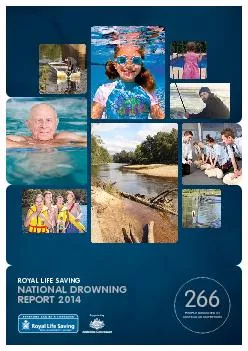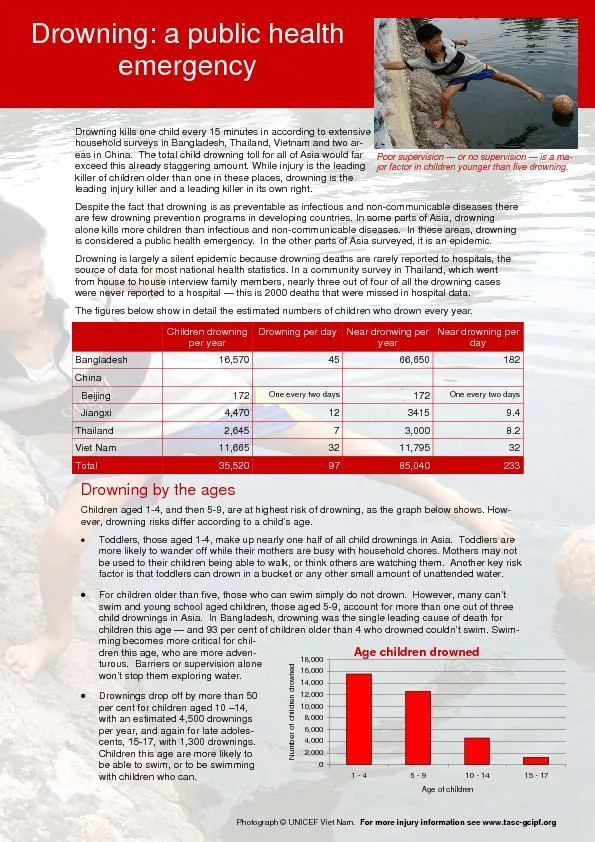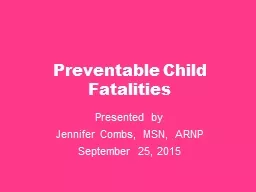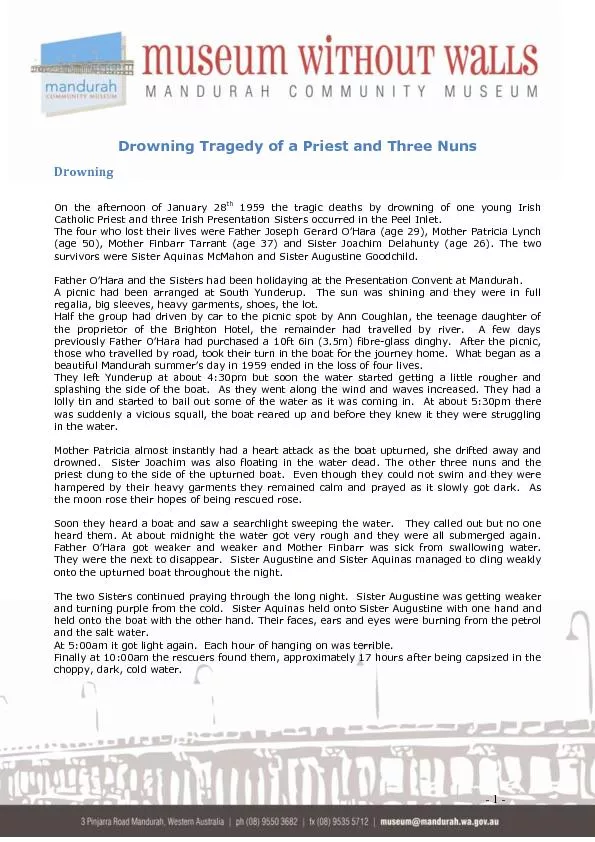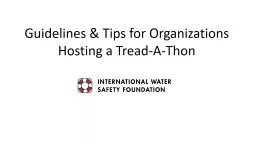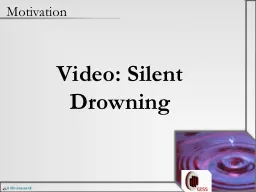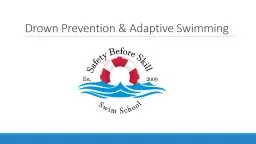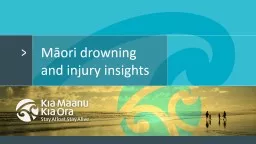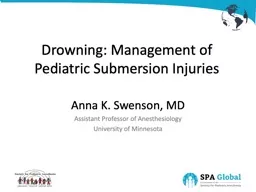PDF-NATIONAL DROWNING REPORT 2014ROYAL LIFE SAVING
Author : yoshiko-marsland | Published Date : 2015-08-25
AUSTRALIAN WATERWAYS Supported by STATE AND TERRITORY90 34 drowning deaths ocurred in New South Wales 47 18 drowning deaths occurred in Victoria LOCATION AND ACTIVITYWaterway
Presentation Embed Code
Download Presentation
Download Presentation The PPT/PDF document "NATIONAL DROWNING REPORT 2014ROYAL LIFE ..." is the property of its rightful owner. Permission is granted to download and print the materials on this website for personal, non-commercial use only, and to display it on your personal computer provided you do not modify the materials and that you retain all copyright notices contained in the materials. By downloading content from our website, you accept the terms of this agreement.
NATIONAL DROWNING REPORT 2014ROYAL LIFE SAVING: Transcript
Download Rules Of Document
"NATIONAL DROWNING REPORT 2014ROYAL LIFE SAVING"The content belongs to its owner. You may download and print it for personal use, without modification, and keep all copyright notices. By downloading, you agree to these terms.
Related Documents

